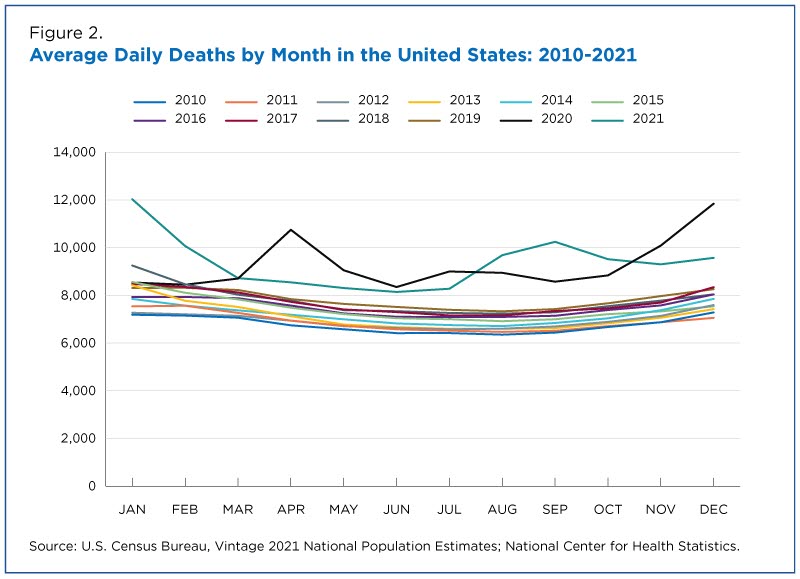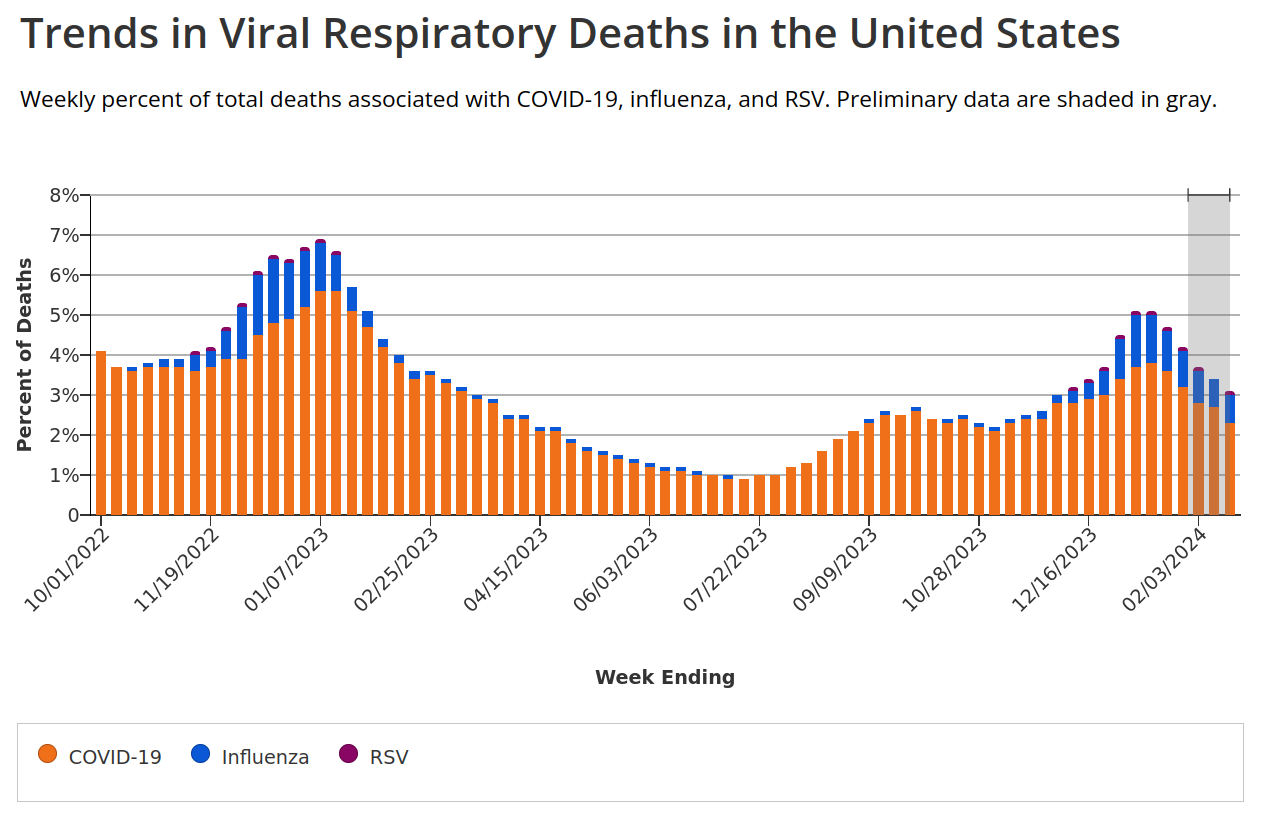

They’re not, they’re complaining about the problems inherent to cars.


They’re not, they’re complaining about the problems inherent to cars.


https://www.ipcc.ch/report/ar6/syr/
I’m looking at the Full Volume, and on page 71 you can see
With about 2°C warming, climate-related changes in food availability and diet quality are estimated to increase nutrition-related diseases and the number of undernourished people, affecting tens (under low vulnerability and low warming) to hundreds of millions of people (under high vulnerability and high warming) … Climate change risks to cities, settlements and key infrastructure will rise sharply in the mid and long term with further global warming, especially in places already exposed to high temperatures, along coastlines, or with high vulnerabilities (high confidence).
At global warming of 3°C, additional risks in many sectors and regions reach high or very high levels, implying widespread systemic impacts, irreversible change and many additional adaptation limits (see Section 3.2) (high confidence). For example, very high extinction risk for endemic species in biodiversity hotspots is projected to increase at least tenfold if warming rises from 1.5°C to 3°C (medium confidence). Projected increases in direct flood damages are higher by 1.4 to 2 times at 2°C and 2.5 to 3.9 times at 3°C
Global warming of 4°C and above is projected to lead to far-reaching impacts on natural and human systems (high confidence). Beyond 4°C of warming, projected impacts on natural systems include local extinction of ~50% of tropical marine species (medium confidence) and biome shifts across 35% of global land area (medium confidence). At this level of warming, approximately 10% of the global land area is projected to face both increasing high and decreasing low extreme streamflow, affecting, without additional adaptation, over 2.1 billion people (medium confidence) and about 4 billion people are projected to experience water scarcity (medium confidence). At 4°C of warming, the global burned area is projected to increase by 50 to 70% and the fire frequency by ~30% compared to today
However, if you really want to get into it, you can read the Climate Change 2022: Impacts, Adaptation and Vulnerability Full Report. It has a lot more details about the effects of climate change on all parts of the world, but it’s also a 3,000 page pdf.


Aren’t we always?
https://www.tacobell.com/food/burritos/beefy-5-layer-burrito
Looks like the actual price is $3.79


I don’t know about a distro, but it looks like they are still maintaining an HTPC app for windows, mac and linux. The linux one looks like it was last updated about 2 weeks ago
Claims held by raw food proponents include:
- That heating food above 104–118 °F (40–48 °C) degrades enzymes in raw food that aid digestion, when in fact enzymes in food play no significant role in the digestive process, prior to being digested themselves.
- That raw foods have higher nutrient values than foods that have been cooked, when in fact cooking affects nutrient contents variably – depending on the plant food and cooking method – and may actually increase availability of fat-based nutrients, such as vitamin E and beta-carotene.
- That foods cooked at high temperatures, especially meat, may contain harmful toxins, including trans fatty acids produced by heating oil, acrylamide produced by frying, advanced glycation end products (AGEs), and polycyclic aromatic hydrocarbons. Not all cooked food contains harmful chemicals, and a diet containing a mix of cooked and raw food is normal. According to the American Cancer Society, it is not clear as of 2019 whether acrylamide consumption affects the risk of cancer. Public health authorities recommend reducing consumption of overly cooked starchy foods or meats.
Health effects
A raw food diet is likely to impair the development of children and infants. Care is required in planning a raw vegan diet, especially for children, as there may not be enough vitamin B12, vitamin D, and calories for a growing child on a totally raw vegan diet.
Food poisoning is a health risk for all people eating raw foods, and increased demand for raw foods is associated with greater incidence of foodborne illness,especially for raw meat, fish, and shellfish. Outbreaks of gastroenteritis among consumers of raw and undercooked animal products (including smoked, pickled or dried animal products) are well-documented, and include raw meat, raw organ meat, raw fish (whether ocean-going or freshwater), shellfish, raw milk and products made from raw milk, and raw eggs.
One review stated that “Many raw foods are toxic and only become safe after they have been cooked. Some raw foods contain substances that destroy vitamins, interfere with digestive enzymes or damage the walls of the intestine. Raw meat can be contaminated with bacteria which would be destroyed by cooking; raw fish can contain substances that interfere with vitamin B1 (anti-thiaminases)”
I don’t speak for all of lemmy, but yeah I think I am going to hate on the raw food movement
If you’re in the US (as Obinice pointed out), type your zipcode in the box in the top left and you’ve got your hyper local forecast and any relevant warnings and watches. I don’t care for or want extra notifications, so that’s a bit of a blindspot for me.
Also, if you’re using firefox on android you can hit the 3 dots and “install” the zipcode specific forecast, which just gives you a shortcut to that page on your homescreen.
weather.gov works fine, thanks


From that we can conclude that after an initial burst in death numbers, as covid and other viruses passes through the populace, death rates return to normal.
I mean, no, we really can’t. There’s not enough data available (that I’m willing to search for) to say for absolutely sure that excess deaths has increased and will stay high, but even just the snapshot you provided here shows that it’s slightly lower in January, and massively higher the rest of the year. Maybe the May 2023 data shows that the numbers are evening out compared to 2016-2019, but the one year we actually get to see shows way more excess deaths over the course of a year compared to before. You can’t just look at the most recent month, that’s not how yearly trends and averages work.
You won’t have much of an argument that the numbers are going back to “normal” until you’ve got closer to a full year’s worth of data with that excess deaths line being close to zero.


So if I’m understanding you correctly, you went from
you still have to account for the fact that covid might kill an old person that would otherwise die to influenza in a month or two
thinking covid wasn’t causing any/many additional deaths per year, just speeding them up a little
to providing a graph that shows thousands of extra people are dying each year
The increase of 2022 and 2021 was expected due to general decline of normal viruses (caused by covid measurements)
to saying all those extra deaths were because people weren’t getting sick from normal diseases, despite us not seeing much of a drop in 2020 from people not getting those diseases during the covid restrictions. But now that the restrictions are lifted and they’re being exposed to those normal diseases (and covid) again, all/most of theses extra deaths are from the normal diseases and have nothing to do with covid.
Norway absolutely did a better job at handling covid than the US, but the US’s death rate seems to just be permanently higher now as a direct result of covid. Maybe removing all restrictions was the right thing to do, but we shouldn’t ignore the fact that it comes at the cost of several thousand more people dying each year, just in Norway.


It looks like you’re getting the data from here (except the Norwegian language version), so I have to ask: is there a reason you’re cutting off the part of the graph showing “Deaths per 1000 mean population” spiking in 2022?

This new table is from here, and you can click “Choose variables” at the top if you want to see different data. But even just the graph you provided shows that total deaths for both sexes jumped up dramatically in 2022, the year you say covid restrictions were lifted. What are you trying to prove here exactly?


Even if I ignore you moving the goalposts, would you really look at a graph like this 
that’s a few years out of date and assume the total deaths settled back down into the old pattern?
I’m not finding a more up-to-date data source for deaths per month, but it’s not like you’re providing any kind of data that covid isn’t still killing a lot of extra people per year.


As many people die from covid as do from influenza or RSV at this point.
I understand you don’t feel affected by covid anymore, but you’re incredibly wrong.
CDC estimates for influenza deaths in the 2022-2023 flu season: 21,000
CDC cumulative covid deaths from Sep 9, 2023 minus Oct 1, 2022: 84,560
Honestly, I’m not seeing a death count for RSV, but based on this RSV Burden Estimates, it’s at most: 10,300 per year.
And this is all shown pretty well in the Trends in Viral Respiratory Deaths in the United States graph.

If the 4 hour long hbomberguy video is to be believed, the Angry Video Game Nerd channel (?) got bought by a company that turned it into something of a content mill. And there’s some plagiarism involved.
The risk is the point though. High risk activities will cost more to insure because they’ll need to be paid out more often. Couple that with the high destruction possible, and you have frequent accidents that can all cause very expensive damage, necessitating a high base price for insurance.
The price gouging is just capitalism, and I doubt anyone here is going to argue that capitalism isn’t bad.